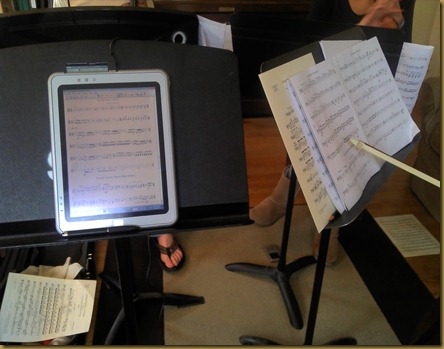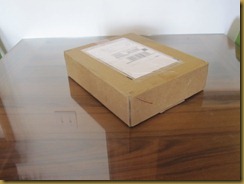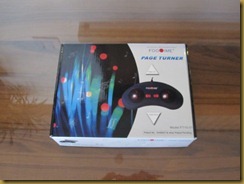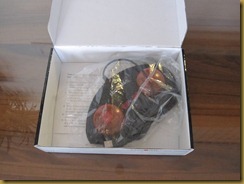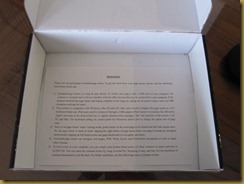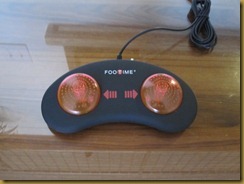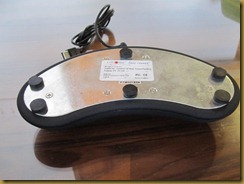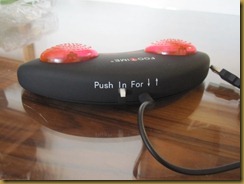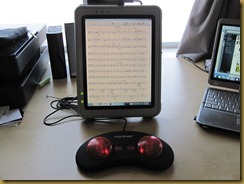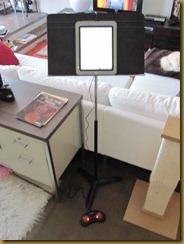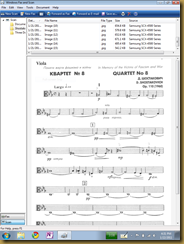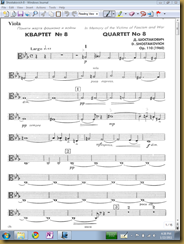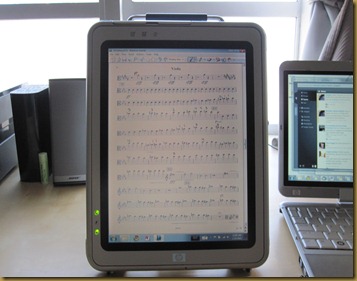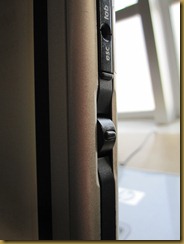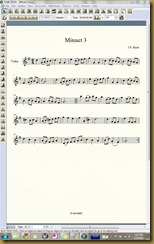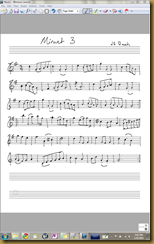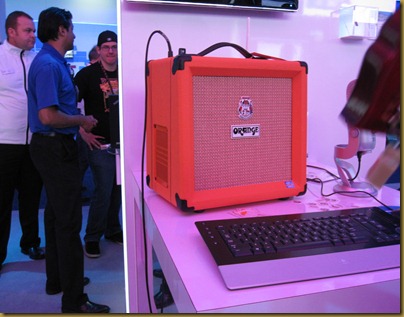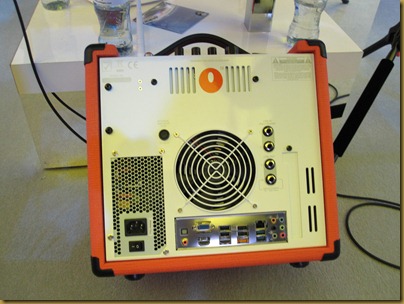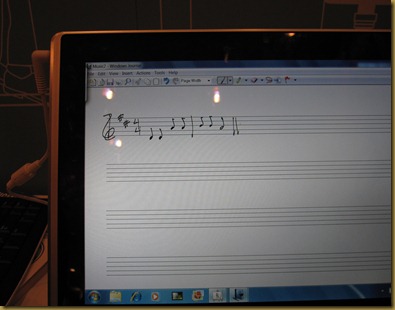
My TC1100 is old. There’s no way around it. While it may perform comparably to a netbook for most tasks, it’s showing its age in other areas. The upgrades to 2GB of RAM and an SSD have helped, but nothing can change the processor or graphics card. One of the most frustrating places it lags is when turning pages in Journal. A half second lag on a page turn is a full measure of music in the second movement of Shostakovich 8th quartet.
For work purposes, I have upgraded to an HP 2730p. The extra screen space, battery life (5 hours on the internal and 3+ more on a fairly worn slice), and power are worth the trade offs in bulk and weight. It’s also nice to have a keyboard attached so it can be used in laptop mode on my lap, as I have no desk at the studio. But, that extra bulk (especially with the slice) makes is less stable on a music stand, and harder to pick up and put down for notetaking during lessons.
This makes the new Asus Slate EP121 that I got to play with at CES a very tempting upgrade. I could have even more power than the HP 2730p with less weight than the TC1100. Even more tempting is the fact that several local (about an hour drive to either Fremont or San Jose) have them in stock. Or, at least they had them. By the time I got to the San Jose store (I was already down there running other errands) they had sold all the boxed units. They were willing to sell me the display, but due to the popularity and newness of it, no discount and the same return policy, with restocking fee, would apply. They said they would be getting more soon, so after spending some good quality time with the display unit, I left without it, but I haven’t stopped thinking about it.
Upon using the TC1100 at rehearsal a few days later, however, I noticed some things that I rely on in the TC1100 that Asus slate lacks. One of my favorite physical buttons on the TC1100 is the jog dial. I’m sure scrolling by touch on the capacitive screen of the Asus Slate is nice, but I’ve found flicks to be unreliable. When it comes to turning a page in performance, nothing beats the reliability of a physical button. It’s possible that now, with the Footime foot pedal, I may no longer need the jog dial, but it’s nice to have the built in option in case I don’t want to carry the foot pedal.
The other, non fixable, deal breaker is the non-removable battery combined with a less than 4 hour runtime. Most performances don’t go past 2 hours, but rehearsals can go 3 or 4. I like the option to swap to a fresh battery in a rehearsal break. Many potential owners are talking about getting an external extended battery to extend the life, but that’s not something I want to be tethered to on a music stand.
I’m still waiting for a 14” slate with 8 hours of battery life, weighing less than 3lbs, and running windows 7.
